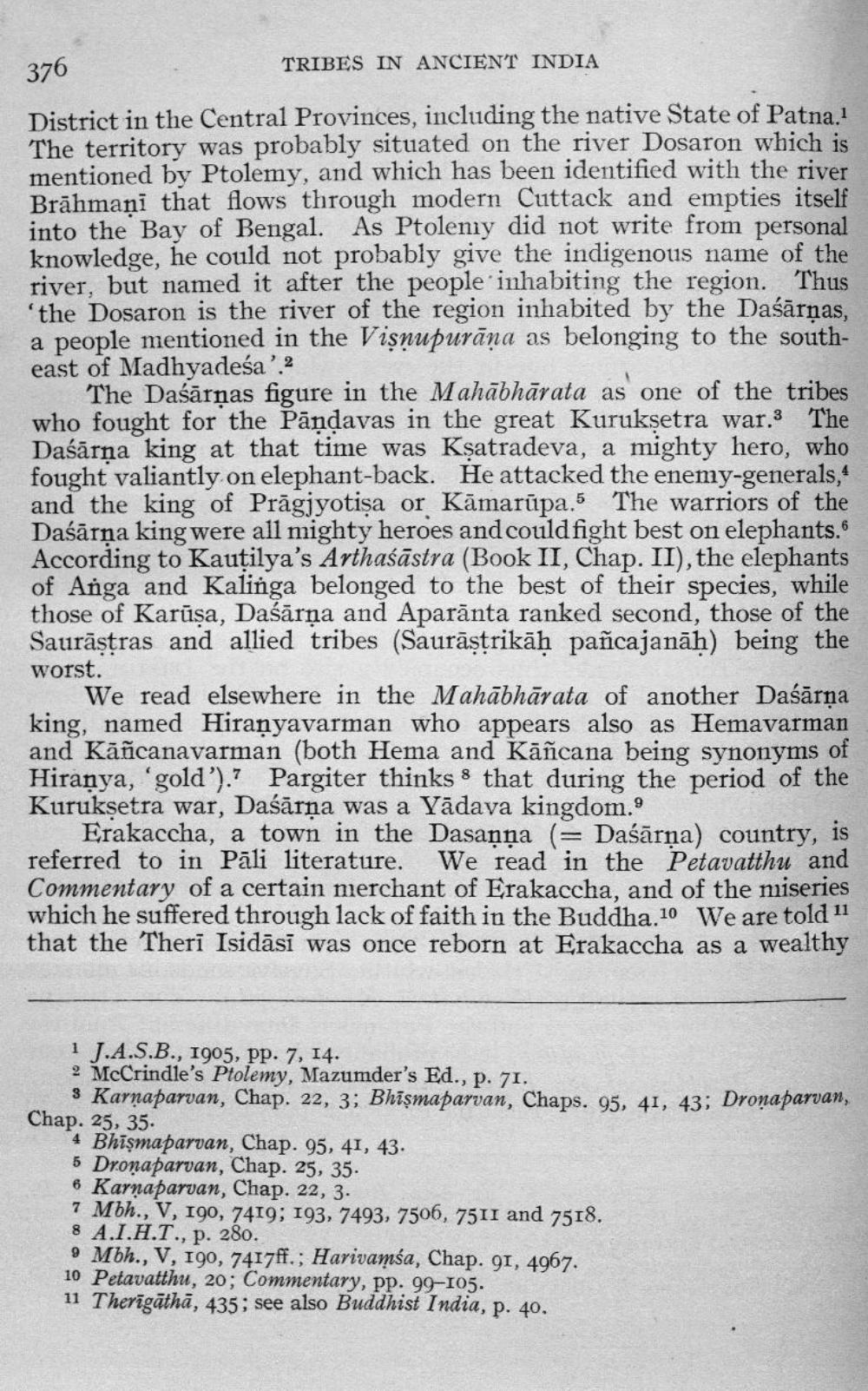________________
376
TRIBES IN ANCIENT INDIA District in the Central Provinces, including the native State of Patna. 1 The territory was probably situated on the river Dosaron which is mentioned by Ptolemy, and which has been identified with the river Brāhmanī that flows through modern Cuttack and empties itself into the Bay of Bengal. As Ptoleniy did not write from personal knowledge, he could not probably give the indigenous name of the river, but named it after the people inhabiting the region. Thus 'the Dosaron is the river of the region inhabited by the Daśārnas, a people mentioned in the Vişnupurāna as belonging to the southeast of Madhyadeśa'2
The Daśārņas figure in the Mahābhārata as one of the tribes who fought for the Pāņdavas in the great Kuruksetra war. The Daśārņa king at that time was Kșatradeva, a mighty hero, who fought valiantly on elephant-back. He attacked the enemy-generals,4 and the king of Prāgjyotisa or Kāmarūpa. The warriors of the Daśārņa king were all mighty heroes and could fight best on elephants.6 According to Kautilya's Arthaśāstra (Book II, Chap. II), the elephants of Anga and Kalinga belonged to the best of their species, while those of Karūsa, Daśārņa and Aparānta ranked second, those of the Saurāstras and allied tribes (Saurāștrikāḥ pañcajanāḥ) being the worst.
We read elsewhere in the Mahābhārata of another Daśārņa king, named Hiranyavarman who appears also as Hemavarman and Kāñcanavarman (both Hema and Kāñcana being synonyms of Hiranya, 'gold').? Pargiter thinks 8 that during the period of the Kuruksetra war, Daśārņa was a Yādava kingdom.9
Erakaccha, a town in the Dasaņņa (= Daśārņa) country, is referred to in Pāli literature. We read in the Petavatthu and Commentary of a certain merchant of Erakaccha, and of the miseries which he suffered through lack of faith in the Buddha.10 We are told 11 that the Theri Isidāsī was once reborn at Erakaccha as a wealthy
1 J.A.S.B., 1905, pp. 7, 14. 2 McCrindle's Ptolemy, Mazumder's Ed., p. 71.
3 Karnaparvan, Chap. 22, 3; Bhīşmaparvan, Chaps. 95, 41, 43; Dronaparvan, Chap. 25, 35.
4 Bhīşma parvan, Chap. 95, 41, 43. 5 Dronaparvan, Chap. 25, 35. 6 Karnaparvan, Chap. 22, 3. 7 Mbh., V, 190, 7419; 193, 7493, 7506, 7511 and 7518. 8 A.I.H.T., p. 280. 9 Mbh., V, 190, 7417ff.; Harivamśa, Chap. 91, 4967. 10 Petavatthu, 20; Commentary, pp. 99-105. 11 Therīgāthā, 435; see also Buddhist India, p. 40.




